|
A GLOSSARY of MILLED BANDS
|
|
| How to Post Photos |
REGISTER (click here)
|
|
A GLOSSARY of MILLED BANDS
|
|
| How to Post Photos |
REGISTER (click here)
|

|
 SMP Silver Salon Forums SMP Silver Salon Forums
  American Silver before sterling American Silver before sterling
  Milk jug Milk jug
|
| next newest topic | next oldest topic |
| Author | Topic: Milk jug |
|
ahwt Posts: 2334 |
  
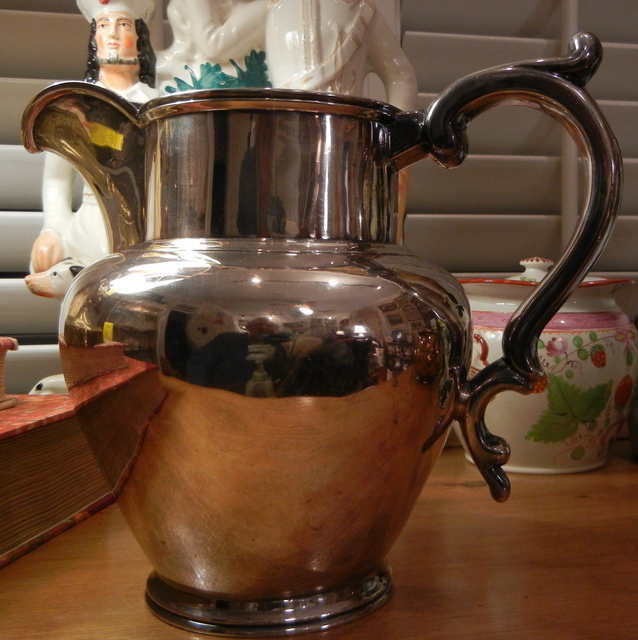 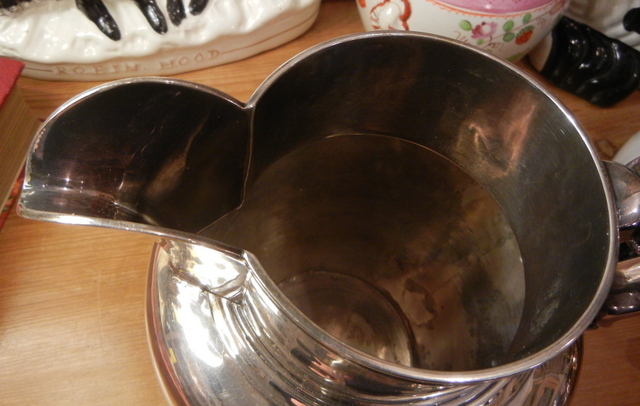 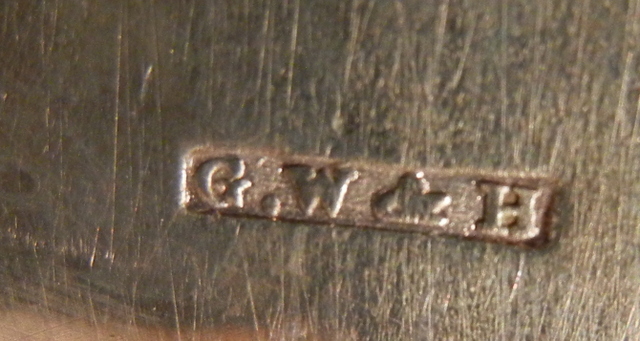 This milk jug or pitcher is from the firm of Gale, Wood and Hughes active 1833 to 1845 and is typical of many ceramic milk jugs from the same time. The exaggerated spout is very typical of hard paste porcelain spouts used by the Tucker and Hemphill firm of Philadelphia and other firms during the same time period. The rest of the pitcher is similar with the exception of the handle that is more typical of those found on silver pitchers. One could of course use this jug for any liquid, but the ceramic ones are normally called milk pitcher or jugs. It is always interesting to see different crafts borrowing ideas from each other. IP: Logged |
|
ahwt Posts: 2334 |
  
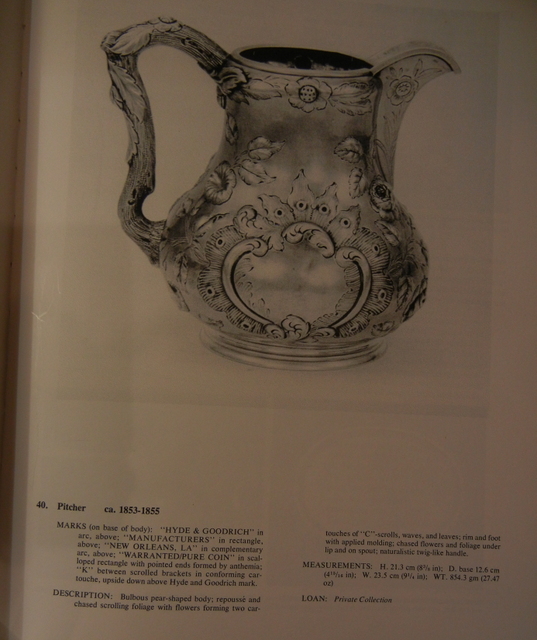 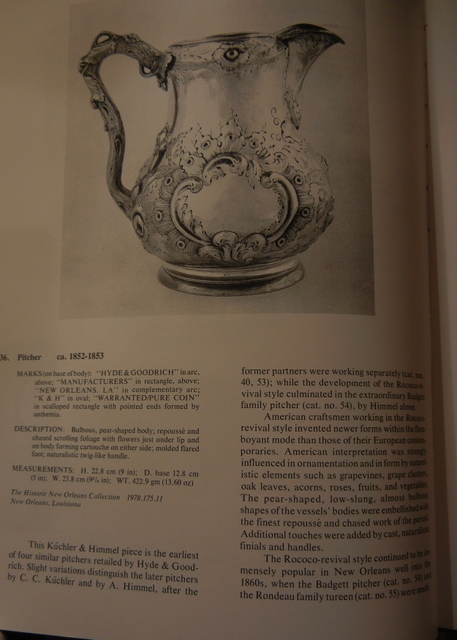 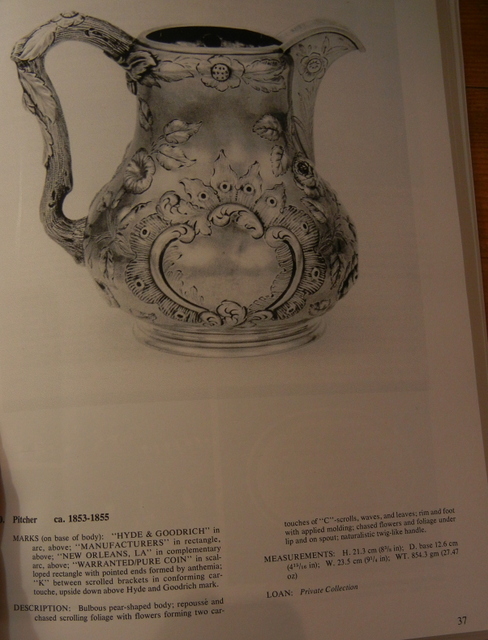 I was just looking through some old books today and these pitchers were all displayed in the book “Crescent City Silver an exhibition of nineteenth century New Orleans silver”. They all used the same type spout as used by the Gale, Wood and Hughes milk pitcher. These however are all from the 1850s rather than the 1830s and are not labeled milk pitchers. This book was reprinted in 2007 and I believe is still available. IP: Logged |
|
wev Moderator Posts: 4121 |
  
I seriously doubt that any of these were used for milk. Milk was not a common (or even healthful) drink in the 19th c, whereas beer was. That in mind, the spout form makes a good deal more sense. [This message has been edited by wev (edited 03-18-2019).] IP: Logged |
|
Polly Posts: 1970 |
  
Wev, didn't people put milk in their coffee and tea? (I'm not suggesting that pitcher was for a coffee/tea service--it's too big.) IP: Logged |
|
ahwt Posts: 2334 |
  
An article on The History of the Milk Jug shows that milk was used early on for tea. I really do not know when these larger pitchers started being called "Milk Jugs" but in English auctions and the like that seems to be what they call them. The English seem to prefer the term jug rather than pitcher for ceramic ones. IP: Logged |
|
ahwt Posts: 2334 |
  
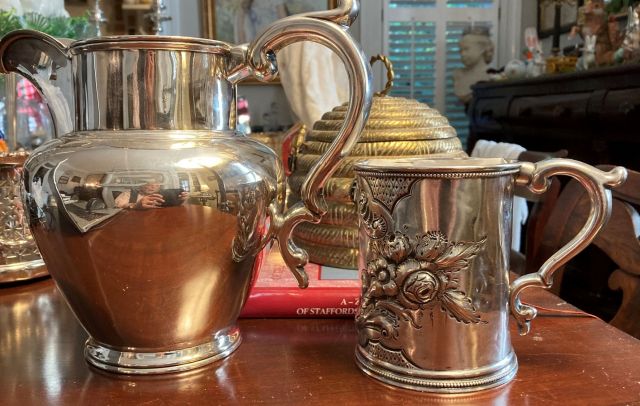 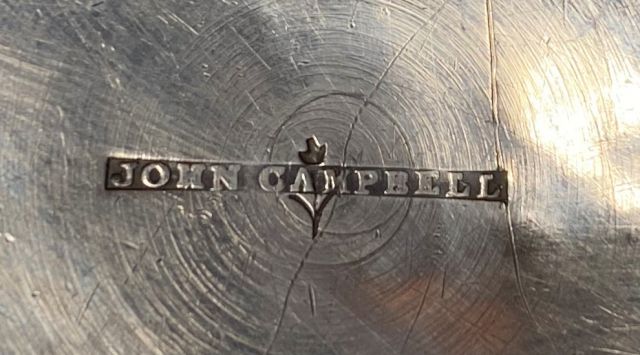 The May June 2021 issue of Silver Magazine has an article by Catherine Hollan that is an extract from her much looked forward new book on South Carolina Silversmiths. This extract discusses John Campbell who started in South Carolina but moved to Montgomery, Alabama in 1849. She shows one of his marks that includes a flower and John Campbell’s name similar to the mark shown above. I put this post on this thread as the jug that is marked Gale, Wood and Hughes has a the very similar handle. By the time this cup was made (probably early 1850s) Wood and Hughes had separated from Gale and were working together. Assigning this to Wood and Hughes may be speculation, but Wood and Hughes mark is found on many Alabama retailed silver articles and I think is a good guess. [This message has been edited by Scott Martin (edited 05-12-2021).] IP: Logged |
|
ahwt Posts: 2334 |
  
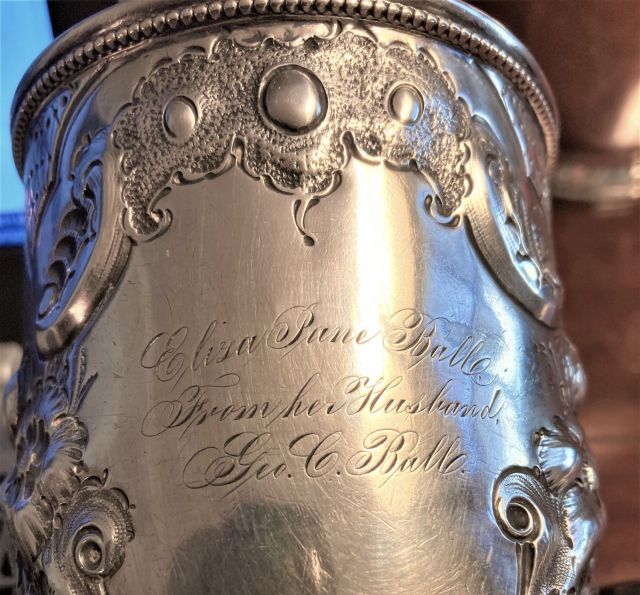 I should add the inscription on the cup as I did a search for George and Jane and found a reference to their son also name George. "BALL, GEORGE C. George C. Ball was born near Montgomery, Alabama in 1841. His ancestors were Virginians. His father and his mother, Eliza Jane Pollard, came to Alabama when they had to travel all the way in stages. The latter came to visit her brother, Colonel Charles T. Pollard. When they were married they returned to Virginia, and celebrated their nuptials there. On his father's side he is connected with General Washington, and on the unveiling of the latter's monument in Washington City, a few years since, he was invited, as one of the living descendants of the Washington family, to be present. His family are also connected with Bishop Proteus, at one time Bishop of London, England. His father was, for many years, a practicing lawyer in Montgomery, Ala., and for the last five years of his life was clerk of the supreme court of Alabama. He died in 1858. His mother died in 1870. Mr. Ball's early life was spent in Montgomery, and he obtained his education in the private schools in that city. But the war coming on he entered the Confederate service, under the lamented Colonel J. H. Clanton, as sergeant major of his regiment of cavalry. After the battle of Shiloh he was transferred to the Eighth Arkansas Regiment, and was a member of the staff of General John H. Kelley, who was the youngest brigadier general in the Confederate service, and was also an Alabamian. Young Ball was at the battle of Shiloh, Murfreesboro, Perryville, Chickamauga, and took part in all the fights from Dalton to Atlanta, and in other hard-fought battles, up to the close of the war. He was not wounded during the whole time, and came out of the war as major. He returned home in April, 1865, was ticket agent, and, at one time, auditor of the Alabama & Florida Railroad, now the Mobile & Montgomery division of the Louisville & Nashville system. He held this position, at Montgomery, for twelve years. From 1877 to 1881 he was mostly in the lumber business. In 1881 he went to Eufaula, Ala., and organized and built an oil mill there, and, in 1882, the oil mills at Albany, Ga. He was general manager of both, with office at Eufaula, and sustained this relation to them five years. In the latter part of July, 1886, he came to Birmingham, and purchased a considerable interest in the Wharton Flouring Mills, and, on November 20th, 1886, was made president of the milling company. Since assuming control of these mills their sales have increased in a tremendous ratio, and they are, under his management, one of the most thoroughly enterprising and progressive manufacturing concerns of Birmingham. Mr. Ball was married May, 1872, to Miss Hattie G. Mays, who was living at the time at Augusta, Ga., but who is a native of Montgomery, being a daughter of the late Judge Thomas Sumter Mays, and to them three children have been born. Mr. Ball belongs to the Andrew Jackson Lodge of Masons, Montgomery, Ala. Both he and Mrs. Ball are members of the Episcopal Church. Source: Jefferson County and Birmingham, Alabama: Historical and Biographical, 1887, Author: John Witherspoon Dubose. Submitted by C. Anthony" [This message has been edited by Scott Martin (edited 05-13-2021).] IP: Logged |
All times are ET | next newest topic | next oldest topic |
  |
|
Ultimate Bulletin Board 5.46a
|
1. Public Silver Forums (open Free membership) - anyone with a valid e-mail address may register. Once you have received your Silver Salon Forum password, and then if you abide by the Silver Salon Forum Guidelines, you may start a thread or post a reply in the New Members' Forum. New Members who show a continued willingness to participate, to completely read and abide by the Guidelines will be allowed to post to the Member Public Forums. 2. Private Silver Salon Forums (invitational or $ donation membership) - The Private Silver Salon Forums require registration and special authorization to view, search, start a thread or to post a reply. Special authorization can be obtained in one of several ways: by Invitation; Annual $ Donation; or via Special Limited Membership. For more details click here (under development). 3. Administrative/Special Private Forums (special membership required) - These forums are reserved for special subjects or administrative discussion. These forums are not open to the public and require special authorization to view or post. |
|
copyright © 1993 - 2022
SM Publications
All Rights Reserved. Legal & Privacy Notices |